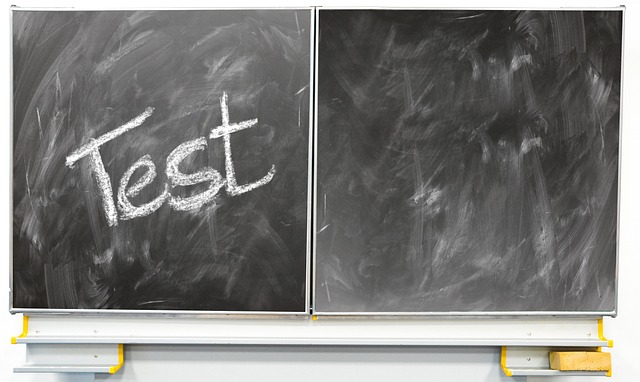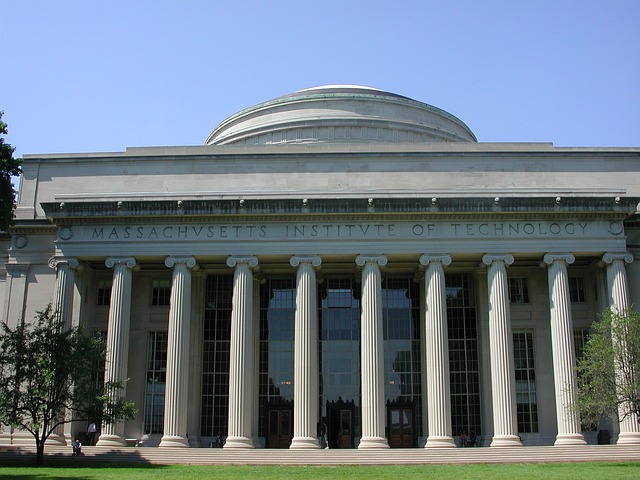
The hallowed halls of the Massachusetts Institute of Technology (MIT) have witnessed the rise of countless brilliant minds. Since its inception in 1861, the institution has been a beacon of academic excellence, churning out Nobel laureates and Fields Medalists with remarkable regularity. Today, aspiring students grapple with a grueling admissions process, navigating a labyrinth of rigorous coursework, demanding essays, and scintillating interviews. The acceptance rate, a paltry 4%, underscores the relentless pursuit of perfection that defines the MIT experience. But what were the trials and tribulations faced by students seeking admission to this bastion of knowledge a century and a half ago? A recent post on Reddit, showcasing an MIT entrance exam paper from 1869, provides a tantalizing glimpse into the past. The examination paper, bearing the proud inscription "Massachusetts Institute of Technology," reveals a snapshot of the algebra section. While the precise nature of the remaining sections – geometry, arithmetic, English, and calculus – remains shrouded in historical mystery, the algebra section offers a fascinating insight into the mathematical acumen expected of prospective MIT students in the late 19th century.
A Journey Back in Time: The 1869 MIT Entrance Exam
It is intriguing to note that the inaugural batch of MIT students in 1865 were not subjected to a formal entrance exam. Instead, they were merely required to be "properly prepared," leaving the specifics of their preparation to the discretion of their educators and the vagaries of the prevailing academic climate.
However, the institution soon realized the need for a standardized evaluation process to ensure the selection of the most capable students. Thus, the entrance examination was introduced, and the 1869 paper, with its focus on algebra, serves as a testament to this evolution of academic rigor. The question paper, which has sparked much discussion and amusement on social media, seems remarkably straightforward by modern standards. The equations, which are typically encountered in a high school curriculum, would likely be considered child's play by today's MIT hopefuls. However, it is crucial to remember that the academic landscape has shifted dramatically over the intervening years.
The Evolution of Mathematical Standards: A Tale of Two Eras
The mathematics of the 19th century differed significantly from the sophisticated mathematical frameworks that we take for granted today. While the fundamental principles of algebra remain unchanged, the development of new mathematical concepts, such as abstract algebra, topology, and calculus of variations, has pushed the boundaries of mathematical understanding. The evolution of the mathematical landscape has inevitably impacted the entrance exam, leading to a profound increase in the complexity and sophistication of the questions.
The questions posed on the 1869 MIT entrance exam likely reflected the mathematical understanding prevalent in the late 19th century. The emphasis on algebraic manipulation and basic problem-solving skills, while essential, does not represent the depth and breadth of mathematical knowledge expected of today's aspiring engineers and scientists. Today, the MIT entrance exam is a comprehensive assessment of mathematical abilities, encompassing a vast spectrum of topics, from advanced calculus and linear algebra to probability and statistics. The examination not only tests a student's proficiency in these areas but also seeks to evaluate their ability to apply these concepts to solve challenging problems.
Beyond Algebra: A Glimpse into the 1869 Curriculum
The surviving algebra section offers a tantalizing glimpse into the 1869 MIT entrance exam, but it is crucial to remember that it represents only a fraction of the total examination. The complete examination likely comprised three to four sections, covering diverse subjects like geometry, arithmetic, English, and calculus.
Unfortunately, the remaining sections have been lost to the sands of time. We can only speculate on the nature of the questions that students were required to answer in these subjects. However, we can reasonably assume that the examination reflected the prevailing academic standards of the era, emphasizing problem-solving skills and a solid foundation in the fundamental principles of mathematics, science, and English.
A Shift in the Educational Landscape: Modern Standards of Academic Excellence
The 1869 MIT entrance exam, while intriguing, is a relic of a bygone era. Today, the MIT admissions process is a highly selective and rigorous endeavor, reflecting the changing educational landscape and the relentless pursuit of academic excellence. The current entrance exam is a multifaceted assessment that delves into a student's academic prowess, intellectual curiosity, and potential to contribute to the MIT community.
In addition to academic performance, MIT places significant emphasis on extracurricular activities, personal qualities, and leadership skills. The application process includes a comprehensive essay component, where students are given the opportunity to showcase their unique talents and aspirations. Letters of recommendation from teachers, mentors, and counselors provide further insights into a student's character and potential. The MIT admissions committee meticulously reviews each application, seeking individuals who embody the spirit of innovation, intellectual rigor, and a commitment to making a positive impact on the world.
A Window to the Past, A Reflection on the Present
"The only source of knowledge is experience." - Albert Einstein
The 1869 MIT entrance exam serves as a fascinating window into the past, reminding us of the evolution of academic standards and the enduring quest for knowledge. While the mathematical challenges of the 19th century may seem modest by today's standards, it is essential to acknowledge the immense contributions that those early graduates made to the advancement of science and technology. The ingenuity and brilliance of the early MIT students laid the foundation for the institution's legacy of groundbreaking innovation.
Today's MIT students inherit a rich intellectual heritage, standing on the shoulders of giants who paved the way for their success. The entrance exam, in its current form, reflects the rigorous standards of the modern academic landscape, seeking to identify students who possess the intellectual firepower and unwavering determination to make their mark on the world.
A Legacy of Innovation: MIT's Enduring Influence
MIT, a true pioneer in the realm of education and technology, continues to shape the future. The institution's alumni have made profound contributions to various fields, from engineering and science to business and politics. From the development of groundbreaking technologies to the pursuit of solutions to global challenges, MIT graduates continue to push the boundaries of human ingenuity.
In the realm of technology, MIT's influence is undeniable. The institute's research labs have spawned numerous innovations that have transformed our lives, from the development of the internet to the creation of artificial intelligence. MIT's entrepreneurial spirit is also evident in the countless start-ups founded by its alumni, many of which have become global giants.
A Call to Action: Embrace the Challenges, Shape the Future
As we stand at the precipice of a new era defined by technological advancements and global challenges, the need for innovative thinkers and problem solvers is greater than ever. MIT, with its unwavering commitment to education, research, and innovation, continues to inspire and empower generations to come. The story of the 1869 entrance exam serves as a reminder of the importance of intellectual curiosity, perseverance, and the pursuit of excellence.
The challenges we face today are complex and multifaceted, requiring a unique blend of technical expertise, critical thinking, and collaborative spirit. Embrace the challenges, cultivate your intellectual curiosity, and strive for excellence. Let the legacy of MIT inspire you to make your mark on the world, leaving behind a legacy of innovation, creativity, and a deep commitment to making a positive difference.
Space for advertisement
EDUCATION
Oct 25, 2024
MIT Entrance Exam: A Glimpse Into the Past
Time travel to 1869 and see how students tackled the MIT entrance exam. Learn about the evolution of academic standards!









